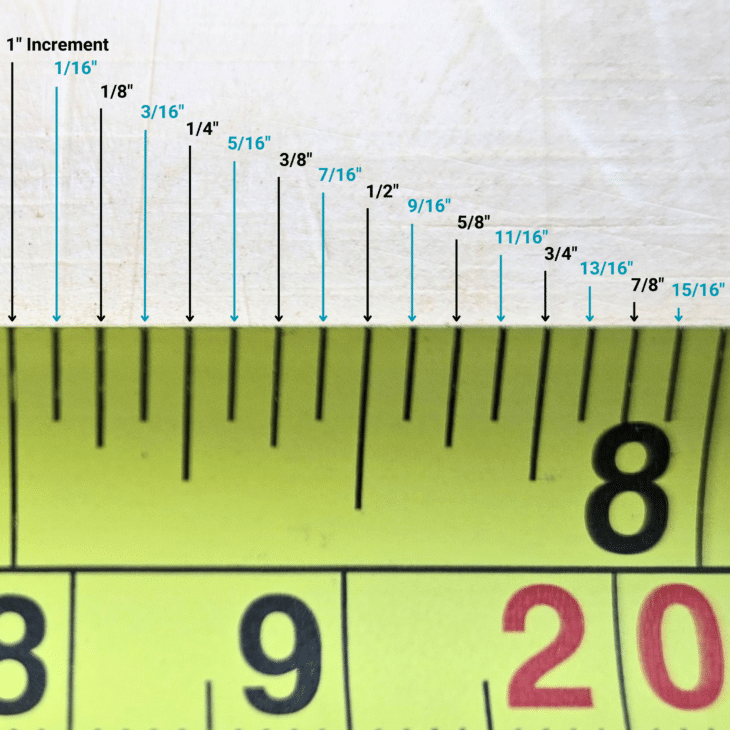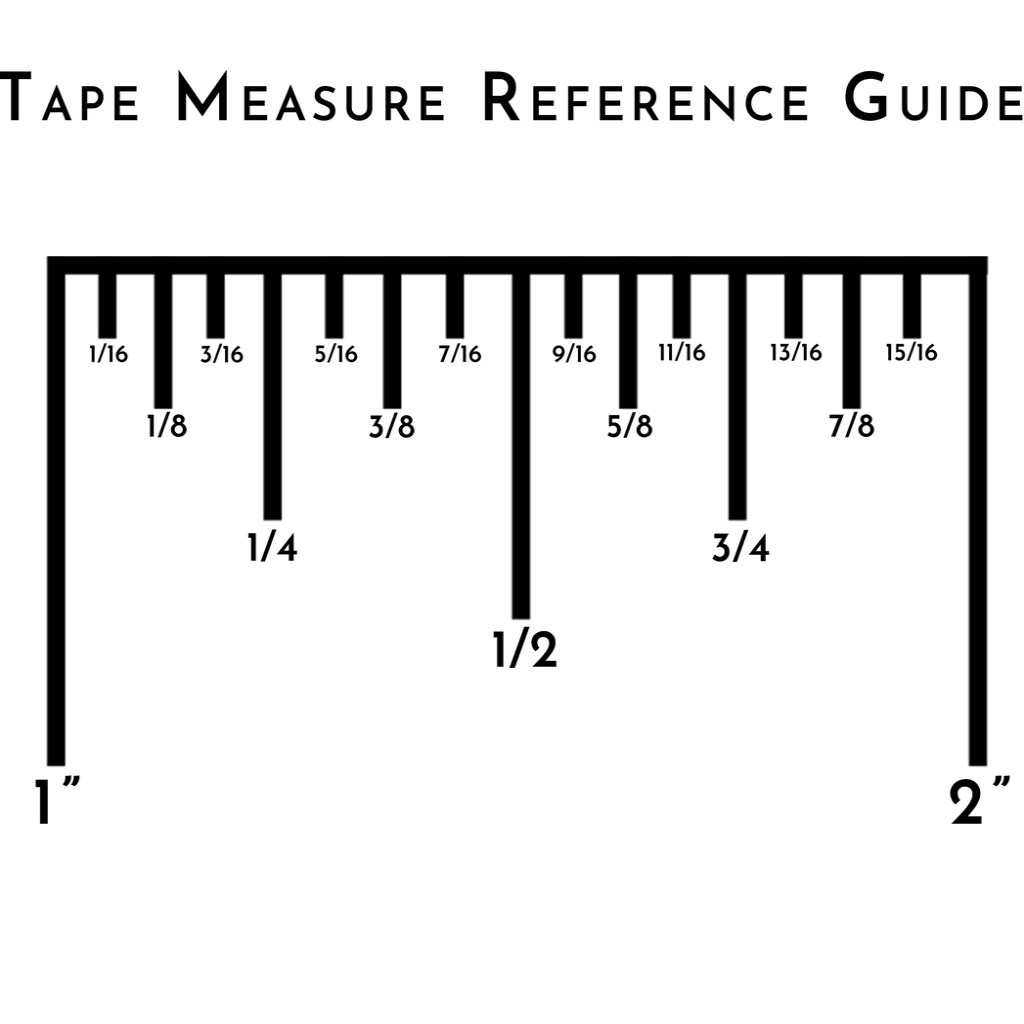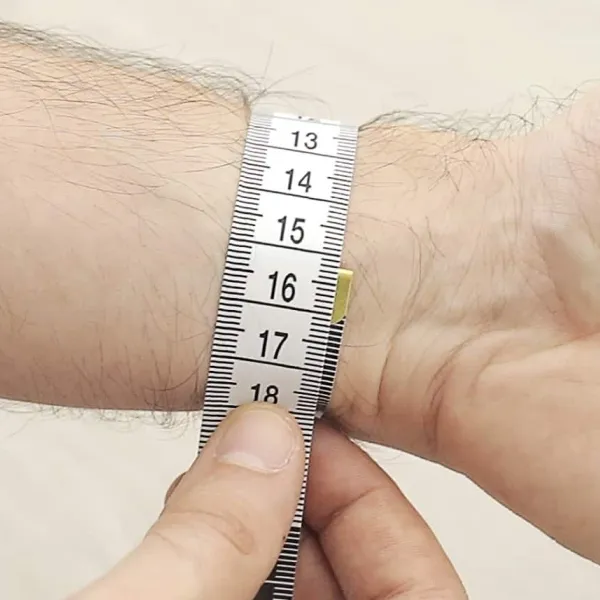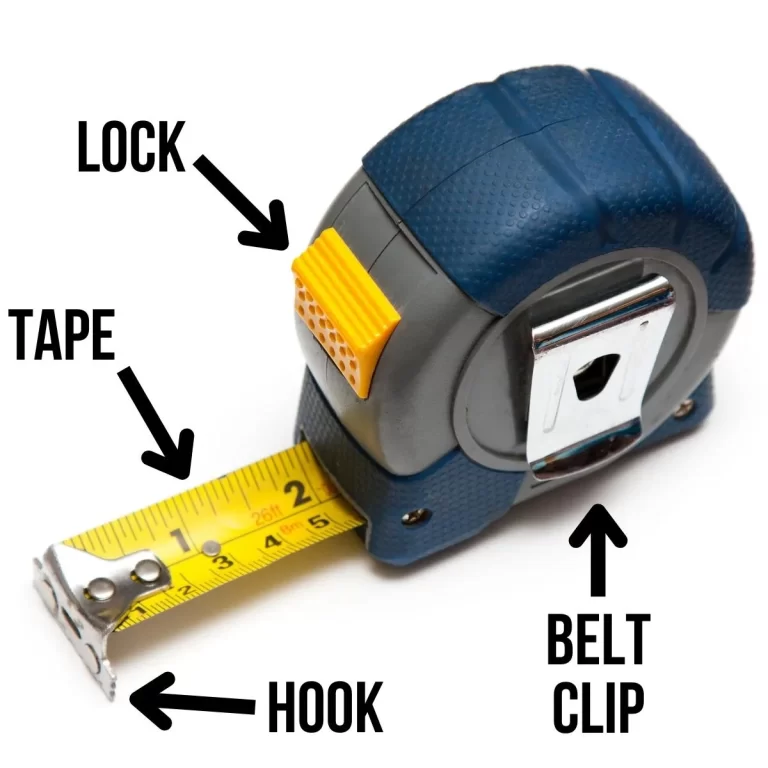
What is Half of 5/8 on a Tape Measure? Tips for DIY Projects
Accurate measurements are crucial in various tasks, from DIY projects to professional woodworking. Understanding fractions on a tape measure ensures precision and success in your endeavors. One common question that arises is, what is half of 5/8 on a tape measure? This guide provides a comprehensive answer, along with practical tips and insights to help you navigate fraction measurements with ease.
 Quick Fraction Conversion Guide
Quick Fraction Conversion Guide
When working with tape measures, fractions can sometimes be confusing. Knowing how to quickly convert and find half of any fraction is essential for accurate measurements. So, what is half of 5/8 on a tape measure?
Understanding Basic Fraction Halving
To find half of a fraction, you simply multiply the fraction by 1/2.
Half of 5/8 inches is 5/16 inches. On a standard tape measure, finding 5/16 inches involves identifying the correct markings and understanding their placement.
Locating 5/16 Inches on a Tape Measure
Most tape measures have markings for eighths and sixteenths of an inch. To locate 5/16 inches:
- Identify the Whole Inch: Start by finding the inch mark on your tape measure.
- Count the Sixteenths: Each inch is divided into 16 equal parts. Each small line represents 1/16 inch.
- Count to Five Sixteenths: From the inch mark, count five small lines to the right. This point marks 5/16 inches.
By following these steps, you can accurately find half of 5/8 inches, which is 5/16 inches, ensuring precision in your measurements.
How to Find Half of 5/8 on a Tape Measure for DIY Woodworking Projects
DIY woodworking projects demand precise measurements to ensure the integrity and aesthetics of the final product. Knowing what is half of 5/8 on a tape measure can make a significant difference in the outcome of your projects.
Step-by-Step Guide for Accurate Measurement
- Mark the Starting Point: Begin by marking the starting point where you want to measure 5/8 inches.
- Measure 5/8 Inches: Use the tape measure to find and mark 5/8 inches.
- Split the Segment: To find half of this measurement, locate the midpoint of the 5/8-inch mark.
- Identify 5/16 Inches: As determined earlier, half of 5/8 inches is 5/16 inches. Use the sixteenth-inch markings to pinpoint this precise measurement.
- Verify Accuracy: Double-check your marking to ensure it aligns perfectly with the 5/16-inch mark.
Practical Applications in Woodworking
- Joining Pieces: When connecting two pieces of wood, ensuring each joint aligns precisely can prevent structural weaknesses.
- Creating Templates: Accurate measurements allow for the creation of templates that can be reused across multiple projects, enhancing consistency.
- Cutting Pieces: Precise cuts based on correct measurements minimize material wastage and ensure professional-looking results.
By understanding and applying the concept of what is half of 5/8 on a tape measure, you can enhance the accuracy and quality of your woodworking projects.
 Common Mistakes When Measuring Half of 5/8 on a Tape Measure
Common Mistakes When Measuring Half of 5/8 on a Tape Measure
Even experienced individuals can make errors when dealing with fractions on a tape measure. Recognizing and avoiding these common mistakes can improve your measurement accuracy significantly.
Misinterpreting Tape Measure Markings
One frequent mistake is misinterpreting the small markings on the tape measure. It’s essential to understand that each small line typically represents 1/16 of an inch. Counting these correctly ensures accurate measurements.
Rushing the Process
Attempting to measure quickly can lead to inaccuracies. Take your time to identify and count the markings carefully. Precision requires patience and attention to detail.
Not Using the Correct Fraction
Confusing similar fractions, such as 5/16 and 10/32 (which are equivalent), can cause errors. Always convert fractions to their simplest form to avoid confusion and ensure consistency.
Failing to Double-Check Measurements
Not double-checking your measurements can lead to mistakes that only become apparent later in the project. Always verify your measurements by recounting the markings or using a second measurement tool.
Incorrectly Applying Half of 5/8
Mistakes can occur when calculating half of 5/8 without understanding the underlying principles. As shown earlier, half of 5/8 is 5/16, not 5/32. Ensuring you perform the correct calculation is vital for accuracy.
Tips to Avoid These Mistakes
- Practice Regularly: Regular use of your tape measure improves your familiarity with its markings.
- Use Clear Markings: Ensure your tape measure’s markings are visible and clear to reduce misinterpretation.
- Take Your Time: Avoid rushing and take the time to measure accurately.
- Cross-Verify: Use another measuring tool or have someone assist you in verifying measurements.
By being aware of these common mistakes and implementing strategies to avoid them, you can ensure your measurements are precise and reliable.
Why Knowing Half of 5/8 on a Tape Measure Matters for Accurate Measurements
Accurate measurements are the foundation of successful projects, whether you’re building furniture, crafting, or performing repairs. Understanding what is half of 5/8 on a tape measure contributes to this accuracy in several ways.
Ensuring Precision in Cuts and Fits
Accurate measurement of half of 5/8 inches, which is 5/16 inches, ensures that cuts are precise. This precision is crucial when pieces need to fit together seamlessly, preventing gaps or overlaps that could compromise the structural integrity of your project.
Enhancing Project Efficiency
Knowing exact measurements saves time and resources. When you measure correctly the first time, you reduce the need for adjustments and rework, making your project more efficient and cost-effective.
Preventing Material Waste
Accurate measurements minimize material waste. Cutting fewer mistakes means you use only the necessary amount of material, conserving resources and saving money.
Achieving Professional Results
Precision in measurement leads to professional-looking results. Whether you’re a hobbyist or a professional, accurate measurements elevate the quality of your work, making it stand out.
Facilitating Complex Calculations
Understanding fractions and their implications on measurements allows you to handle more complex calculations with ease. This skill is beneficial in advanced projects that require intricate detailing and exact specifications.
Avoiding Structural Weaknesses
In projects that involve load-bearing components, such as cabinetry or shelving, precise measurements are essential to avoid structural weaknesses. Accurate measurements ensure that all parts support each other correctly, maintaining the stability and safety of the finished product.
 FAQ: Everything You Need to Know About Half of 5/8 on a Tape Measure
FAQ: Everything You Need to Know About Half of 5/8 on a Tape Measure
Navigating fractions on a tape measure can be tricky. Here are answers to some common questions related to what is half of 5/8 on a tape measure:
What Is Half of 5/8 on a Tape Measure?
Half of 5/8 inches is 5/16 inches. To find it, multiply 5/8 by 1/2, resulting in 5/16.
How Do I Locate 5/16 Inches on a Standard Tape Measure?
On a standard tape measure, each inch is divided into 16 parts, with each small line representing 1/16 inch. Count five of these small lines past the inch mark to locate 5/16 inches.
Can I Use a Calculator to Find Half of 5/8 Inches?
Yes, you can use a calculator for accurate fraction conversion. Simply input 5/8 multiplied by 1/2 to get 5/16.
Are There Tools to Help Me Measure Fractions More Easily?
Yes, some tape measures come with built-in fraction conversion guides or markings for increased precision. Additionally, digital tape measures or measuring apps can aid in accurately determining fractional measurements.
What Are Some Common Uses for 5/16 Inches in Projects?
5/16 inches is commonly used in woodworking for joining pieces, spacing components, or creating precise measurements for fittings and fixtures.
Is It Important to Convert Fractions When Measuring?
Yes, converting fractions ensures accuracy, especially in projects requiring precise dimensions. Understanding how to halve fractions like 5/8 ensures your measurements are correct and reliable.
What Should I Do If I’m Unsure About My Measurement?
If you’re uncertain, double-check your measurement using another tool or seek assistance from someone experienced. It’s better to verify twice than to proceed with incorrect measurements.
Can Mismeasuring 5/16 Inches Affect My Project?
Yes, mismeasuring can lead to poorly fitting pieces, structural weaknesses, and the need for adjustments or rework, affecting the overall quality and success of your project.
How Can I Improve My Fraction Measurement Skills?
Practice regularly using your tape measure, familiarize yourself with fraction markings, and use tools like fraction charts or converters to enhance your understanding and accuracy.
Are There Alternatives to Using Fractions on a Tape Measure?
While fractions are traditional, digital measuring tools can provide more straightforward measurements by eliminating the need for fractional calculations. However, understanding fractions remains valuable for versatility and precision.
Step-by-Step Visual Tutorial: Calculating Half of 5/8 on a Tape Measure
Visual aids can significantly enhance your understanding of measuring fractions. Here’s a step-by-step guide to help you calculate and locate half of 5/8 inches on a tape measure.
Step 1: Understand the Fraction
First, recognize that half of a fraction is found by multiplying the fraction by 1/2.
Step 2: Locate the Inch Mark
Find the inch mark on your tape measure. This is the starting point for your measurement.
Step 3: Identify the Sixteenth-Inch Markings
Each inch on a standard tape measure is divided into 16 small lines, each representing 1/16 inch.
Step 4: Count to Five Sixteenths
From the inch mark, count five small lines to the right. Each line represents 1/16 inch, so five lines equal 5/16 inches.
Step 5: Mark 5/16 Inches
Once you’ve counted five lines, place a mark or note the measurement at the 5/16-inch point. This point represents half of 5/8 inches.
Visual Representation
- Inch Mark: |———————————|
- Sixteenth Marks: |—|—|—|—|—|—|—|—|—|—|—|—|—|—|—|—|
- Counting Lines: 1, 2, 3, 4, 5
- 5/16 Inch Point: After counting five lines, mark the spot.
By following these steps, you can accurately determine and mark half of 5/8 inches on your tape measure, ensuring precision in your measurements.
 Half of 5/8 vs Other Fractions: Which Mark to Look for on Your Tape Measure
Half of 5/8 vs Other Fractions: Which Mark to Look for on Your Tape Measure
Understanding different fractions and their significance on a tape measure is essential for accurate measurements. Comparing half of 5/8 inches with other common fractions can enhance your measurement skills.
Comparing Common Fractions
- Half of 5/8 (5/16): As discussed, half of 5/8 inches is 5/16 inches. This measurement is useful for precise cuts and fittings.
- Quarter of 5/8 (5/32): While less common, knowing this fraction can be beneficial for intricate projects requiring even finer measurements.
- Double of 5/8 (10/16 or 5/8 x 2): Doubling 5/8 inches gives you 10/16, which simplifies to 5/8 inches. This is useful when needing to measure larger sections based on smaller segments.
Visual Differences on a Tape Measure
- 5/16 Inches: Located by counting five 1/16-inch marks from the inch.
- 5/32 Inches: Found by counting five 1/32-inch marks, available on more detailed tape measures.
- 10/16 Inches: Equivalent to 5/8 inches, requiring familiarity with simplifying fractions.
Practical Applications
- 5/16 Inches: Ideal for standard woodworking measurements, ensuring pieces fit together correctly.
- 5/32 Inches: Useful for detailed projects, such as intricate carvings or fittings requiring fine adjustments.
- 5/8 Inches: Common in various applications, including building frameworks and larger fittings.
Choosing the Right Fraction
Selecting the appropriate fraction depends on the project’s precision requirements. For more straightforward projects, 5/16 inches may suffice, while intricate work might necessitate understanding smaller fractions like 5/32 inches.
Avoiding Confusion
It’s crucial to distinguish between similar fractions to prevent measurement errors. Practice identifying and counting the correct number of small lines on your tape measure to ensure you select the right fraction for your needs.
By comparing half of 5/8 inches with other fractions, you can enhance your measurement accuracy and adaptability across various projects.
The Best Tape Measures for Easily Finding Fractions Like Half of 5/8
Choosing the right tape measure can simplify the process of finding and using fractions like half of 5/8 inches. Here are some of the best tape measures that make fractional measurements straightforward and accurate.
1. Stanley PowerLock Tape Measures
Features:
- Clear Fraction Marks: Each inch is divided into 16 marks, making it easy to locate 5/16 inches.
- Durable Construction: Built to withstand regular use, ensuring longevity.
- Magnetic Hook: Helps keep the tape in place during measurements.
Why It’s Ideal: The clear markings and durable design make Stanley PowerLock tape measures a favorite among professionals and DIY enthusiasts alike.
2. Crescent Vinyl Coated Tape Measures
Features:
- Vinyl Coating: Protects the tape from damage and wear.
- Precision Marks: Each inch is accurately divided into sixteenths, aiding in precise measurements.
- Easy-to-Read Numbers: Large, clear numbers improve visibility.
Why It’s Ideal: The vinyl coating enhances durability, while the precise marks ensure accurate fraction measurements like half of 5/8 inches.
3. Komelon Self Lock Tape Measures
Features:
- Self-Locking Mechanism: Automatically locks the tape in place, making measurements easier.
- Stainless Steel Blade: Resistant to rust and wear, providing accurate readings over time.
- Wide Hook: Facilitates easy one-person measurements.
Why It’s Ideal: The self-locking feature and stainless steel blade make Komelon tape measures reliable and easy to use for fractional measurements.
4. Lufkin Standard Tape Measures
Features:
- FiberFlex Blade: Increases flexibility without sacrificing durability.
- Contrasting Design: Improves readability of fractions like 5/16 inches.
- Protective Case: Keeps the tape measure safe when not in use.
Why It’s Ideal: Lufkin’s fiber-flex blade and contrasting design enhance the visibility of fractions, making it easier to find half of 5/8 inches accurately.
5. Milwaukee Tape Measures
Features:
- Long Blade Lengths: Available in various lengths to suit different project needs.
- Pocket Protectors: Prevent the tape from retracting too quickly, reducing wear.
- Wide, Easy-to-Read Numbers: Enhance visibility and accuracy.
Why It’s Ideal: Milwaukee tape measures offer a combination of durability and precision, making them excellent for accurate fractional measurements.
Choosing the Right Tape Measure for Your Needs
When selecting a tape measure, consider the following factors to ensure it meets your fractional measurement needs:
- Marking Clarity: Clear, well-defined fraction marks make it easier to locate specific measurements.
- Blade Durability: A durable blade ensures longevity and maintains accuracy over time.
- Ease of Use: Features like self-locking mechanisms and magnetic hooks enhance usability.
- Size and Length: Choose a tape measure length that suits your typical project requirements.
By investing in a high-quality tape measure, you simplify the process of finding and using fractions like half of 5/8 inches, ensuring precision and ease in all your measurements.
 Final Thoughts
Final Thoughts
Understanding what is half of 5/8 on a tape measure is a fundamental skill for anyone involved in tasks requiring precise measurements. Whether you’re engaged in DIY projects, woodworking, or professional construction, accurate fractional measurements ensure the success and quality of your work.
By recognizing that half of 5/8 inches is 5/16 inches, and knowing how to locate this on your tape measure, you enhance your ability to perform precise cuts, fits, and adjustments. Avoiding common measurement mistakes, choosing the right tools, and practicing regular measurement techniques can further improve your accuracy and efficiency.

